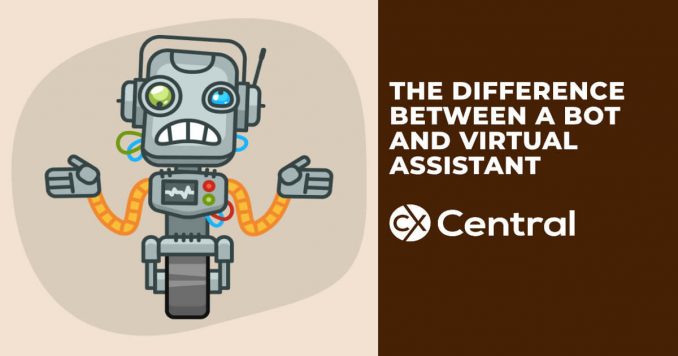
The difference between a chatbot and virtual assistant
Chatbot – what a buzzword!
They are everywhere, and it’s getting harder and harder to understand what they really are and what they are not.
The lines are getting blurry as the media uses this word to describe simple scripts, intelligent and conversational versions; even “messaging” and “chatbot” are intertwined for some.
That’s why it’s difficult to explain the actual difference between a bot and virtual assistant, and messaging and to understand what customers really want.
Everybody uses the word chatbot, so it allows vendors to sell something very simple and narrow in function; but the brand, buying into the vendor’s claims, expects something more sophisticated and, when everything is deployed, is disappointed in what they get.
How do brands find the needle in a haystack full of chatbots?
Let’s talk about the difference between a chatbot and a virtual assistant
- “A bot (short for “robot”) is an automated program that runs over the Internet. Some bots run automatically, while others only execute commands when they receive specific input. […] Chatbots were one of the first types of automated programs to be called “bots” and became popular in the 1990s, with the rise of online chatrooms. These bots are scripts that look for certain text patterns submitted by chat room participants and respond with automated actions.”
- Chatbots have evolved since then. Some say that “virtual assistant” and “chatbot” are the same; some disagree. At the end of the day the name doesn’t matter; it’s the function that is important.
- Both chatbots and virtual assistants are more intelligent than a simple bot. When a bot only follows the script, the chatbot and virtual assistant have more options to interpret the command. Supported by artificial intelligence they understand the meaning of what was said or typed. They can look at the phrases but also understand what specific words mean in a certain context. They can utilise information from other sources, like a CRM, real-time insights and more.
The problem is that there are a lot of scripted bots out there that are sold as something bigger.
Enterprises can start with a simple, scripted version and can evolve over time.
But they need to make sure that the vendor they choose allows them to grow.
Thus, they should look for:
- Strong Natural Language Understanding (NLU) capabilities
- Capability to work with human agents, either by seamlessly escalating to Live Chat or secretly asking a human for help
- Enterprise scalability during training, deployment and conversations
- Learning capabilities based on machine learning algorithms, for example:
- Train the base model – the first version of the VA – based on existing chat and/ or call transcripts
- While deployed, ask humans for help, observe them and learn from this interaction
- Utilise actionable Voice of the Customer insights to optimise and enhance the dialogue
Search a list of supplier for chatbots, AI and more for customer support on the free CX Directory >>>


Be the first to comment